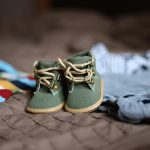Putting Some Bounce in Your Step
as seen in The Racine Journal Times | July 7, 2017
There’s a new initiative in Racine, sponsored by The Johnson Foundation at Wingspread, to build more resilient communities. While the focus of the series of speakers is on the community at large, there’s a direct correlation to enhancing resiliency (or the ability to bounce back after a loss) at the personal finance level too.
One of the successful ingredients for an individual or family to bounce back is the degree to which they’re able to absorb an unexpected financial loss. In her presentation, futurist Rebecca Ryan described a “Cone of Plausibility” which projects the future from today to a wide range of plausible outcomes in the future. While some are preferable, others are more of a “wild card” which may not always be positive.
There are a variety of strategies to increase someone’s financial resiliency when you’re hit with a wild card such as building an emergency cash fund or buying health insurance. I’d like to focus on the importance of cash flow which is simple to understand but not easy to execute. Each of us require a certain amount of money to cover our living expenses. When our expenses exceed our income, it’s like wearing shoes that are too small for the size of our feet. Painful.
Unfortunately, we don’t always know our correct size so we try to squeeze ourselves into shoes that don’t fit. The solution is to accurately measure our footprint in the form of our living expenses to make sure our income can support our level of spending. Using tools such as mint.com or Quicken to track expenses is one option for identifying how much you spend.
Another approach (which doesn’t require tracking all of your individual expenses) is to automatically save a certain amount of your income each month and live off the rest. Assuming you’re not accumulating debt to increase your spending, this naturally leads to spending less than you earn.
Not only does the monthly savings increase your financial resiliency by building financial assets, you’re also creating a buffer against a sudden drop in income since you’re not spending all your current income. It’s much easier to temporarily reduce your savings rate than it it is to cut spending. It’s the same as wearing shoes that fit with a little wiggle room at the top.
As our community leaders look for ways to build a more resilient community, it’s up to each of us to identify ways to increase our personal resiliency. Together, we’ll all be able to bounce back quicker!





